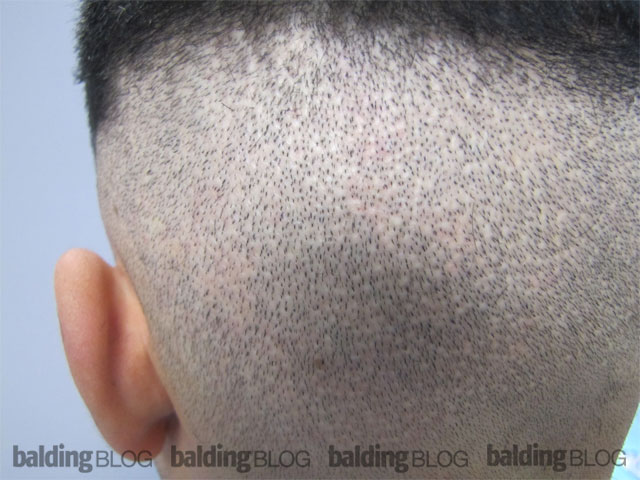I received a question from a patient after an extensive meeting (over an hour) about the options of FUE vs strip (FUT) procedures, and he asked which of the newer FUE systems was best. He was particularly confused by the promotions of the ARTAS and Neograft systems. That prompted me to start writing. I’ve split this post up into four parts and will post one per day. Let’s begin…
—
History of FUE:
I would consider myself an authority on FUT, the megasession (I published extensively on these procedures in 1993-1996), and I introduced Follicular Unit Extraction (FUE) to the medical community in a series of publications in well known journals. My experience with FUT and megasessions is large. Although the FUE technique was introduced by us in 2001 in a medical publication and in 2002 at the ISHRS world congress, I was developing FUE since 1995. On each and every patient, with their permission, I performed about 20 FUE within the strip area and got pretty good at doing them.
Back in 1995-1999, the problem I came up with was a lack of constancy in each patient’s extraction results. In some patients we were able to get 20 out of 20 perfect grafts and when that happened, we felt like masters of the FUE process. Sometimes, however, our success rate was less than half of our best results. I was humbled by the difficulty of the process. To address the problem, Dr. Pak and I developed many types of instruments and punches (between 1995-2000), some with controlled depth, some with larger and smaller diameters, some open on one side, some not circular, some with serrated edges, etc… We tried to correlate the quality of the results with the instrument design. We tried to correlate the quality of the results with the instrument design and there was clearly more value in some of the instruments over others. The serrated edge, in some of its iterations, seemed to produce the most consistent results in our hands. By 2000, we stabilized our technology with the serrated punch and continued to develop the FUE2 method which we successfully patented.
On a side note, this is how I developed my relationship with Dr. Jae Pak, who worked with me initially in the 90’s as a bio-mechanical engineer (before he became a physician). Working with Dr. Pak, we jointly developed the FUE process and the initial set of instruments used for it. If you visit my office and we have the time, we can show you the history in the hand units we made. Dr. Pak and I made all of our own instruments. You can also search on Google Patents and enter my name or Dr. Pak’s name (add hair to the search) for all the patents pertaining to hair transplant surgery (or see a list on my CV).
We tested drilling, vibration, and varying degrees of tumescence, and even patented a mechanical stabilizer to hold the skin tight as our attempt to come up with the consistent perfect graft. This stabilizer is used by the ARTAS System today. After the initial 2001 publication in a medical journal, I handed out a DVD to every physician in the audience (a few hundred doctors at the ISHRS) so that they could take it home, watch it, and try to learn from the video. Within a few days of the meeting, a surprising announcement by a doctor from Toronto was made telling the world of his new FUE invention. The doctor called me prior to his announcement, asking me all types of questions on how to do it, what punch to use, etc. I quickly became aware of the sleazy way he tried to get credit for something he did not pioneer. His goal was simple: to try to corner the FUE market before other doctors got into it.
Although other doctors did not make public announcements as this Toronto doctor did, many, many doctors started to offer FUE to their patients. I knew that those that marketed FUE in the 2001-2003 time frame really could not build expertise in this technology; nevertheless, selling it reflected potential money in their pockets. And indeed, I met many doctors who knew nothing about FUE over the years, who simply started doing it and practicing the procedure on new patients, not really helping many of them until they learned enough technique to produce actual value for the patients. I know this because many of those patients came to me to probe the failures of the procedure and to get my opinion on what they should do. Patients paid high fees for these doctors practicing on them.
If a doctor does not tell the patient about his/her level of experience, one should question the integrity of the doctor. FUE is both an art and technical challenge. I have become aware of dishonest doctors who just poke holes in the head, charge by the hole and hope that they get enough grafts out of the process to get growth. I have become an expert witness in litigations advocating on behalf of victimized patients. Today, some doctors take courses by the ISHRS, but courses alone do not impart the technical skills needed for FUE. Taking a fellowship with a doctor skilled in FUE will be the best guarantee of FUE competence.
—
I’ll post the next part of this series tomorrow.


